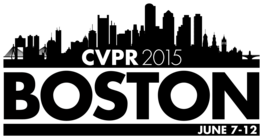-
Classifier Adaptation at Prediction Time
AbstractClassifiers for object categorization are usually evaluated by their accuracy on a set of i.i.d. test examples. This provides us with an estimate of the expected error when applying the classifiers to a single new image. In real application, however, classifiers are rarely only used for a single image and then discarded. Instead, they are applied sequentially to many images, and these are typically not i.i.d. samples from a fixed data distribution, but they carry dependencies and their class distribution varies over time. In this work, we argue that the phenomenon of correlated data at prediction time is not a nuisance, but a blessing in disguise. We describe a probabilistic method for adapting classifiers at prediction time without having to retrain them. We also introduce a framework for creating realistically distributed image sequences, which offers a way to benchmark classifier adaptation methods, such as the one we propose. Experiments on the ILSVRC2010 and ILSVRC2012 datasets show that adapting object classification systems at prediction time can significantly reduce their error rate, even with no additional human feedback.
Related Material
[pdf][bibtex]@InProceedings{Royer_2015_CVPR,
author = {Royer, Amelie and Lampert, Christoph H.},
title = {Classifier Adaptation at Prediction Time},
booktitle = {Proceedings of the IEEE Conference on Computer Vision and Pattern Recognition (CVPR)},
month = {June},
year = {2015}
}
These CVPR 2015 papers are the Open Access versions, provided by the Computer Vision Foundation.
Except for the watermark, they are identical to the accepted versions; the final published version of the proceedings is available on IEEE Xplore.
Except for the watermark, they are identical to the accepted versions; the final published version of the proceedings is available on IEEE Xplore.
This material is presented to ensure timely dissemination of scholarly and technical work.
Copyright and all rights therein are retained by authors or by other copyright holders.
All persons copying this information are expected to adhere to the terms and constraints invoked by each author's copyright.

